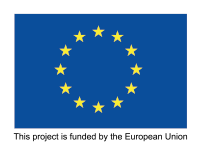
STGM Stüdyo kapsamında 6 çevrimiçi oturum düzenlendi.
Ethical and Legal Issues in Video Production:
In the session we held on 09.06.2021, we talked about both ethical and legal issues that we should pay attention during our video-production process as CSOs.
First, we mentioned what kind of ethical responsibilities we have towards the participants, the creator of the video and the audience while producing or using a video content. We talked about the vitalism of obtaining the informed consent of the subjects of the video and evaluating this consent separately for each individual, and that this evaluation is our responsibility. Then, we went through some examples to understand which steps we should take in order not to endanger the security and privacy of the subjects with the videos we create and at the same time to avoid any words, visuals or behaviors that can harm the dignity of people. Likewise, we underlined the importance and sensitivity of the language we use and the visuals we include in the video content in our interviews with disadvantaged and vulnerable individuals and groups (such as children, women who have been subjected to violence, LGBTi+, refugees). Then, we talked about what kind of responsibilities we have towards the content creator/author if we use the images created by other people. We mentioned that we also should not endanger the privacy and security of these people. We should examine the content carefully to understand whether the goal of the people who shoot and who spread the video overlap and does not intend to harm any group or individual. Lastly, we talked about our ethical responsibilities towards the audience. We emphasized the importance of carefully analyzing whether the images we use convey the right things to the audience and the feeling they will create in the audience.
After talking about ethical issues, we came to the legal points we should pay attention to the video-creation process. First, we talked about how we should get permission and which regulations needs to be paid attention to, while shooting in public and private/public property areas. Then, we talked about our legal obligations about both the right of privacy and protection of personal data of the subjects of the video. From this point of view, we argued how competing rights situations may happen (such as the right of privacy, protection of personal data vs. freedom of expression) and what steps needs to be taken in such cases. Finally, we ended the session by talking about the issues in terms of copyright, such as the images and sounds we use while creating a video. We discussed the some topics like how we should get the permission, different procedures of the platforms where we publish our video and which steps we should take at these points.
Video Shooting Techniques:
In the Video Shooting Techniques Support Program we made within the scope of STGM Studio, Online Education Support, we briefly covered the shooting techniques that will enable us to construct a narrative using audio-visual language. We talked about which resolution ratios we can get the best results for which media platform, how to properly expose and how to manage the lighting of our scene. We examined with examples how we can create effects using framing and composition methods.
With these steps, which we can easily apply even when shooting with a mobile phone, we talked to our participants about how we should shoot what we want to say in order to turn it into video content in a strong and clear way, and the problems we may encounter if we do not comply with them.
We are about to meet in the section where we will talk about how we can process these images in the Editing and Subsequent Processes Support Program, which is the next part of the process!
Live Broadcast Methods:
In the Live Broadcasting Methods session we held within the scope of STGM Studio, Online Education Support, we examined practical and effective solution methods that we can use as CSOs.
We talked about the importance of determining the flowing rhythm that can be achieved with the preparations to be made before a live broadcast. We reviewed the steps to be followed to determine the most suitable platform - method according to the broadcast format we will make. We discussed the importance of active involvement of the audience and ways to mobilize them.
We shared what kind of backup plans and solutions should be kept in case of any disruption - from the participants or technical problems - and the emergency maneuvers we developed in the light of the experiences of all participants.
Audio Recording and Podcast Method
We hosted Candost Bayraktar, the founder of Podbee Media, in the Session on Audio Recording and Podcast Methods, which we held within the scope of STGM Studio, Online Education Support. We started our session by talking about how the radio, which seems to disappear slowly, with the problem of not having enough time in the spirit of the era we live in, is coming back to our lives with podcasts. Through the dedication and effort required to create a sustainable and long-term podcast program, we mentioned that even if we produce podcasts with the most popular names, we should expect audience feedback in the long term.
Explaining the equivalence of episode broadcasting periods with quality content production times and the importance of complying with the standards we set, Candost Bayraktar emphasized that although they have the most ideal equipment and environment in the studio they created for recordings, they had to convert the recording methods to the facilities at home due to the pandemic conditions.
Photo Shooting and Editing Methods
Photographer Anıl Özoğlu was our guest at the session on Photography and Editing Methods, which we held within the scope of STGM Studio, Online Education Support. We talked about the basic elements of photography, starting with the fact that we are in a period where we have had the easiest photographic opportunities in history since the invention of photography. We examined examples in which ways we can change the aesthetics of photography by controlling these basic elements. We have listed the behavior patterns of light, how we should follow them, and, if necessary, the methods of controlling creating the light. By examining its effects through examples, we tried to examine what kind of method was followed in which photograph.
We talked about the types of photography, the subtleties of these areas, and the points to be considered. While composing, we underlined the power of layered and harmonic framing. We have indicated the uses of framing standard ratios. We looked at camera types, lenses, and focal lengths. In the last part, we ended our session by talking abo
Editing and Montage Method
Erdem Murat Çelikler, who won the 'Best First Documentary' award at the Antalya Golden Orange Film Festival with his documentary "While Everyone Is Sleeping", was our guest in the Editing and Montage Methods session held within the scope of STGM Studio, Online Education Support. We started our session by talking about the traditional forms of editing, which is the method of creating meaning in cinema and video, and in which situations we can break and stretch them. We talked about how continuity is ensured by going through examples of basic cutting relationships, and how it is possible to create an impact on the audience by breaking the continuity and creating a fiction contrary to the linear narrative.
We examined how the music and sound should support the editing and the drawbacks of getting ahead of the images. We underlined the methods of creating an archive that can be used comfortably in the long term, and that we can avoid confusion and waste of time while editing the images in whatever way we file the images we receive. We ended the session by listing the tips we should always consider while editing.

